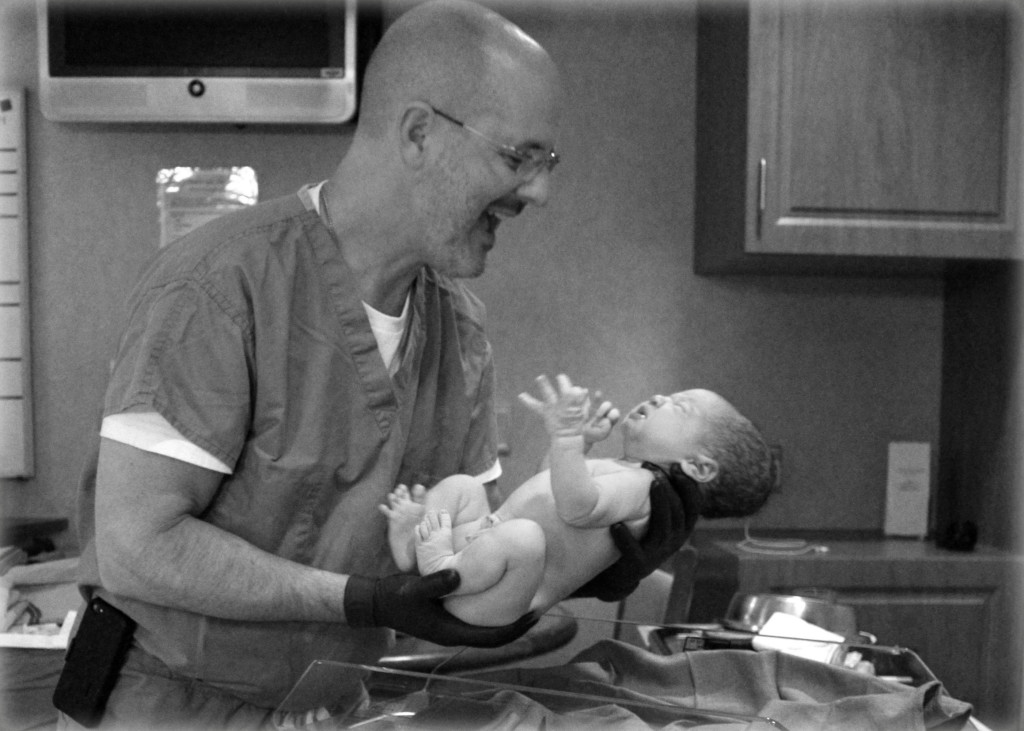Once a Cesarean, Always a Cesarean? Vaginal Birth after Cesarean Section
One of the most common reasons women undergo cesarean section today is because of having had a previous cesarean section. That is, their physician subscribes to the, “Once a cesarean always a cesarean,” philosophy. Yet many other women have successful vaginal deliveries after a prior cesarean section. What is the right answer? What does the research tell us? What is best for you and your baby?

There was a time in the early 1990’s when the thinking was that everyone and anyone could attempt a vaginal birth after cesarean section (VBAC). There were even some areas in the country where insurance companies required patients to have a so-called trial of vaginal labor before they would allow a repeat cesarean section. However, over time reports surfaced of bad, even catastrophic outcomes from women attempting VBAC. As a result, physicians and hospitals in some areas stopped VBAC programs altogether and our national cesarean section rates have risen dramatically as a result. More recently, the pendulum has once again swung in the favor of reason and thanks to new research and policy statements from national medical organizations, VBAC is on the comeback. Yet change comes slowly in medical practice and despite new recommendations VBAC remains unobtainable for far too many women.
What drives many physicians and hospitals away from VBAC? The problem lies with the potential for the scar in the uterus from the previous cesarean section to separate or rupture during labor. If this happens, the results can be truly catastrophic with severe injury and even death of the baby with similarly devastating consequences for the mother. The research data is challenging to interpret when it comes to the likelihood of VBAC complications. It is difficult if not impossible to predict when and to whom a complication may occur. And to make matters worse, there has been and will likely always remain an intense fear of litigation resulting from a VBAC complication. As a result, the default position of many physicians and some hospitals has been to perform repeat cesarean sections in hopes of avoiding VBAC complications. However, and this is of critical importance, repeat cesarean section is not without significant risk. That is, there is no no-risk alternative; both repeat cesarean section and VBAC have risks.
So what is one to do? There are risks to having a repeat cesarean section and risks to attempting VBAC. How do you choose which set of risks to accept? Sadly, many patients and physicians alike underestimate the risks of repeat cesarean section while overestimating the risks of VBAC. From a physician’s perspective, this makes sense because the risks of repeat cesarean section are considered, “Acceptable risks of surgery,” that is, they can and do occur with any major surgical procedure. These risks include bleeding and the need for blood transfusion, injury to pelvic structures including the uterus, tubes, ovaries, bladder, and intestines, as well as postoperative infection, and blood clots, and the need for extended hospitalization. There is also, albeit minimal, the risk of injury to the baby during the surgery. But for the most part, these are the same risks one faces with any abdominal surgery such as hysterectomy or appendectomy. Obstetricians tend to feel more comfortable accepting these risks as compared to the VBAC risks, likely because when VBAC complications occur they are without warning and the obstetrician feels inherently out of control, able only to react to what has occurred. We obstetricians don’t like that position and it makes us very uneasy.
My approach to VBAC involves an effort to understand and describe the risks of both alternatives and to work with women to determine what is best for them on an individual basis. I believe many of the problems encountered in the past have resulted from policy makers attempting to force a given decision on all women and their physicians. Instead, this is a decision that should be based on an individual women’s comfort with the various risks in close consultation with her obstetrician.
Is there an, “Ideal candidate,” for VBAC? The research data says probably not, although this too is unclear. I like to think of potential VBAC candidates along a continuum from, “ Ideal,” on the one extreme to, “Not-so-ideal,” on the other. If we think of the ideal candidate it is probably a woman who has experienced one or more uneventful vaginal deliveries, and in a subsequent pregnancy underwent cesarean section for what I think of as, “Bad luck.” By that I mean something occurred that is not necessarily likely to reoccur in the present pregnancy. Examples include a baby in the breech (bottom first) presentation, the prolapse of a baby’s hand through the cervix, or the prolapse of the baby’s umbilical cord through the cervix. Each of these problems requires a cesarean section, but they are not likely to reoccur in subsequent pregnancies. A patient in this situation who is very motivated to have a VBAC and understands the risks is, from my perspective, “Ideal.”
What type of patient is ”Not-so-ideal” for VBAC? In discussing this with patients, I describe a woman who in a previous pregnancy labored and her cervix became fully dilated. Then she pushed for several hours, but was never able to deliver despite an adequate trial (and, “adequate,” can have several definitions) is probably a less than, “Ideal” candidate. This does not mean that such a patient cannot or should not attempt VBAC, however.
Is there a patient who simply should not attempt VBAC? The data here is clearer. A woman who has undergone uterine surgery for the removal of fibroids and that surgery involved the full thickness of the uterine wall should not attempt VBAC. There is general agreement that a woman who has experienced a uterine rupture in the past should not attempt VBAC. A woman who has had a prior cesarean section and is now pregnant and her baby’s weight is estimated to be greater than 4,500 grams (or approximately 9 lbs.) may not be an ideal candidate, but this is less clear and not an absolute contraindication to VBAC. There is even less data to direct decision making in the patient pregnant with twins who has undergone a prior cesarean section, but the general recommendation is that these patients may attempt VBAC.
In summary, the most important take away message when it comes to VBAC is the need for a detailed, transparent discussion with your obstetrical provider about the complexities and uncertainties related to VBAC as they relate to your specific set of circumstances. It is critical that you understand the issues outlined above and that you are able to discuss them in a meaningful way with your provider so that the two of you may come to a decision that is right for you and your baby. Most importantly, if your provider does not perform VBAC’s you should strongly consider a consultation visit with another obstetrical provider trained to manage pregnant women with a prior cesarean section who desire VBAC.
If you are interested in reading more about VBAC, I suggest the American College of Obstetricians and Gynecologists (ACOG) Practice Bulletin #115, Vaginal Birth After Cesarean Delivery, August 2010.

